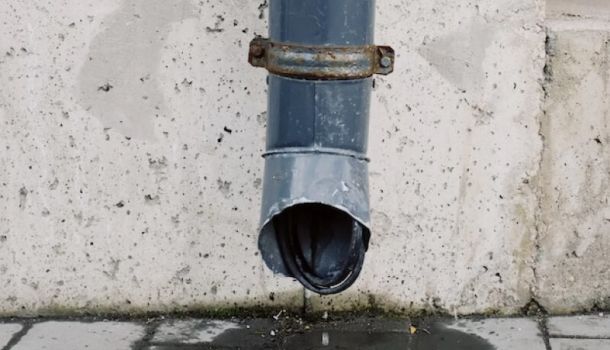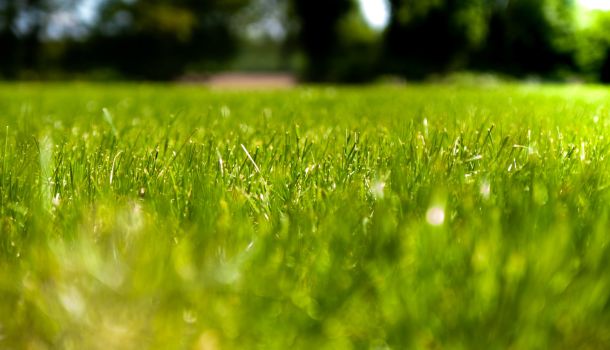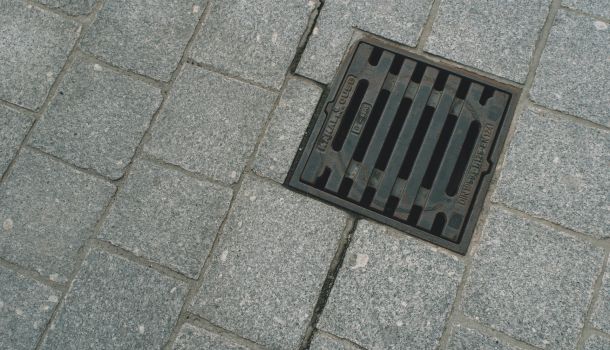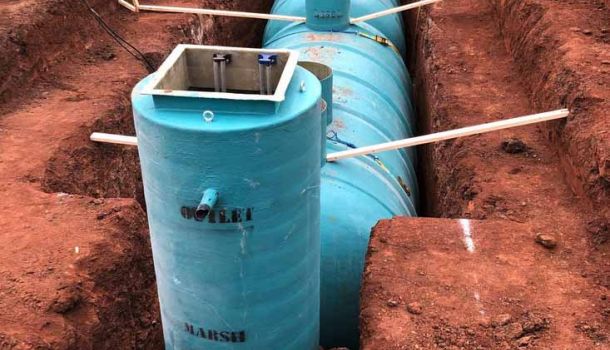How to unblock a shower drain?

How to unblock a shower drain?
Is your shower drain blocked? Maintaining clean and functional drains in our homes is essential for a smooth and hassle-free daily routine. However, a blocked drain can quickly become a source of frustration and inconvenience. If you're dealing with blocked drains, fear not! In this blog post, we will explore effective methods to unblock your blocked drain and get the water flowing freely again.
So, if you're tired of standing ankle-deep in water while showering or dealing with slow drainage, keep reading to discover how to unblock your blocked drain and, say goodbye to those pesky blockages for good and keep your shower drain properly and efficiently running smoothly.
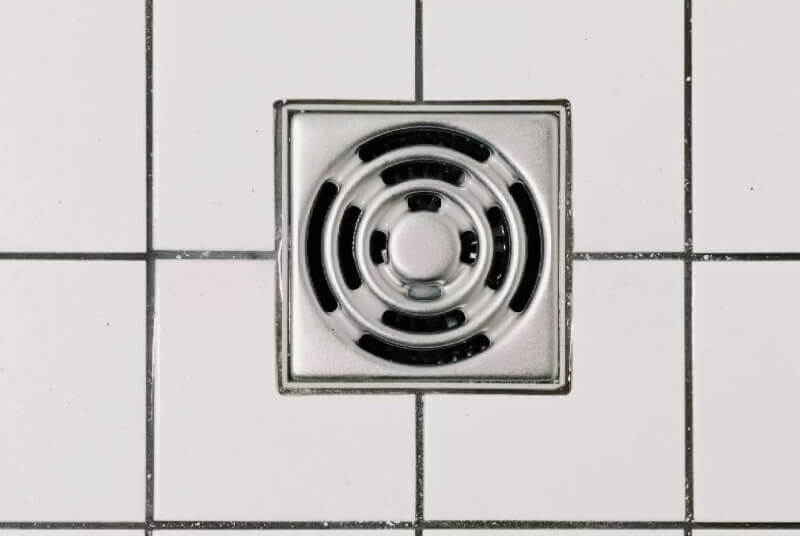
So, Why am I getting a blocked drain?
Before we get into how to unblock your drains, let’s take a look at some reasons why they can get blocked in the first place
Hair: Hair is one of the main culprits behind a shower blocked drain. As hair goes down the drain, it can accumulate and combine with soap scum, leading to clogs. However, there are a few more reasons why you could be getting a blocked drain. These can include:
Soap scum and residue: Over time, soap scum and residue can build up in the drain pipes, hindering the flow of water and causing blockages.
Foreign objects: Sometimes, foreign objects such as jewellery, small toys, or even a rag can accidentally make their way into the drain and cause obstructions.
Grease and oil: Grease and oil from personal care products or cooking can accumulate in the pipes, causing blockages and reducing the water flow.
Mineral buildup: Minerals present in the water supply can gradually accumulate inside the pipes and restrict the flow of water.
Tree roots: In some cases, tree roots may infiltrate underground pipes and create blockages in the plumbing system.
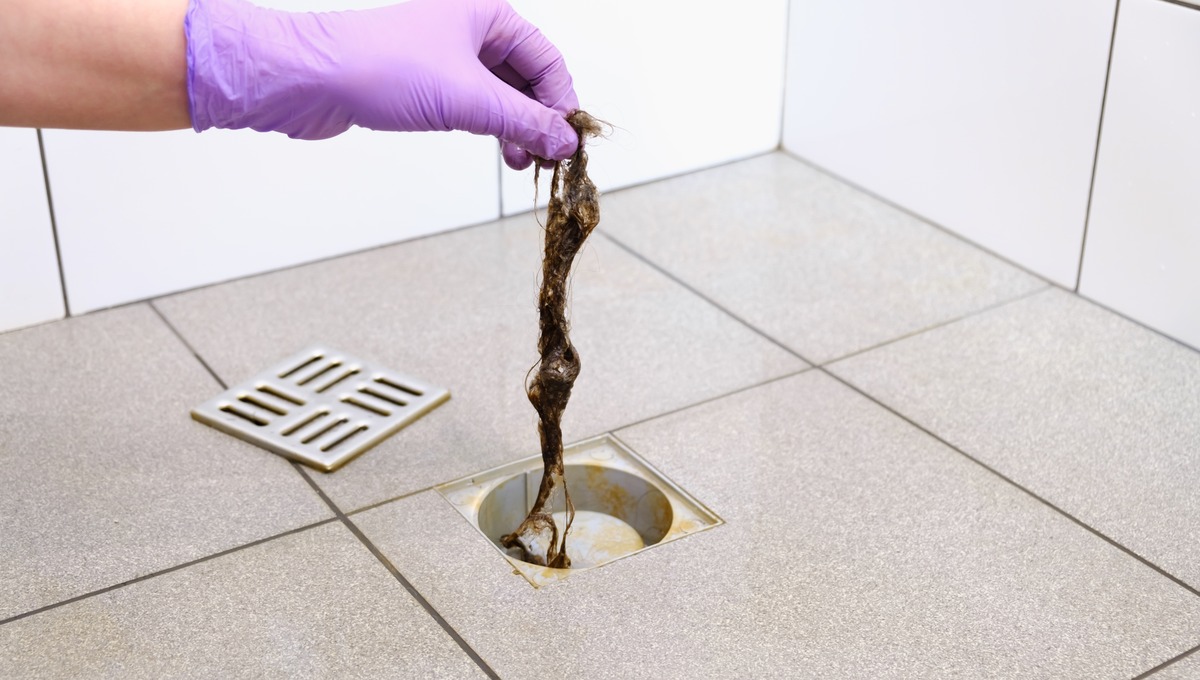
How to know your drains are blocked?
Before diving into how unblocking drains work, it's important to assess the situation and understand the extent of the blockage. Here are a few signs that indicate a blocked shower drain:
Slow Drainage:
If water is taking longer than usual to drain from your shower, it's a clear sign of a blockage. Pay attention to how quickly the water accumulates while showering.
Standing Water:
If you notice standing water in your shower area even after the water has stopped running, it indicates a significant blockage in the drain.
Foul smells and unpleasant odours:
Foul odours emitting from your shower drain are a result of accumulated debris and stagnant water caused by a blockage.
What tools will you need before starting your blocked drain unblocking?
Plunger: A classic tool used for unclogging drains, a plunger helps create suction and dislodge the blockage.
Drain Snake: Also known as a plumber's snake or auger, a drain snake is a flexible tool designed to reach deep into the drain and break up the clog.
Rubber Gloves: It's always a good idea to protect your hands with rubber gloves to avoid direct contact with any dirt, grime, or chemicals that might be trapped in the drain.
Bucket or Container: Having a bucket or container nearby will help catch any excess water or debris that may come out during the unclogging process.
Always consider safety before you start any drain unblocking.
Eye Protection: To protect your eyes from any splashes or debris, consider wearing safety goggles before attempting to unclog the drain.
Ventilation: Ensure the bathroom is well-ventilated by opening windows or using a fan. This helps prevent the buildup of fumes or unpleasant odours.
Avoid Harsh Chemicals: While chemical drain cleaners may seem like a quick fix, they can be harmful to your pipes and the environment. It's best to opt for more natural and environmentally friendly methods.
The Guide: Remove the Blockage and Drain Clearance
A plunger is a simple and effective tool for unclogging a shower drain. Here's how you can use it effectively:
Plunger
- Start by ensuring there is enough water in the shower to cover the bottom of the plunger cup. If needed, add some water to create a seal.
- Place the plunger over the drain, making sure the cup completely covers the drain opening. Press it firmly against the surface to create a good seal.
- Apply downward pressure on the plunger handle, then quickly pull up to create suction. Repeat this plunging motion vigorously several times.
- After a few repetitions, release the plunger to see if the water starts draining. If it does, continue plunging until the water drains freely.
- If the blockage persists, you may need to adjust the plunger's position or try a different technique.
Tips for creating a good seal:
- Use petroleum jelly or a bit of water around the rim of the plunger cup to improve the seal.
- Ensure that the plunger cup is centred over the drain opening to create an airtight seal.
- If you have a double-cup plunger, make sure both cups are submerged in water to enhance suction.
Plunging technique for removing the blockage:
- Maintain a steady rhythm while plunging. The repeated pressure and suction help dislodge the clog.
- Be careful not to apply excessive force that could damage the pipes. Use controlled, firm pressure while plunging.
- If you encounter resistance or the blockage seems stubborn, try changing the angle of the plunger or adjusting the force of your plunging.
- Continue plunging until the water begins to drain smoothly. You may need to repeat the process a few times to completely clear the blockage.
Drain Snake
When a plunger doesn't do the trick, a drain snake, also known as a plumber's snake or auger, is a valuable tool for unclogging stubborn blockages in your shower drain. Here's how you can use a drain snake effectively:
Introduction to drain snakes:
A drain snake is a long, flexible tool with a coiled wire or cable that extends deep into the drain. Its purpose is to break up and dislodge clogs, allowing water to flow freely again. Drain snakes are available in various lengths and types, including hand-operated models and power-driven options.
Types of drain snakes available:
- Handheld Drain Snake: This type of drain snake is manually operated, often consisting of a handle with a coiled wire or cable attached. It is suitable for smaller blockages closer to the surface.
- Power Drain Snake: Power-driven drain snakes are motorised tools that provide more force and are ideal for handling larger or more stubborn blockages. They are commonly used by professional plumbers but can also be rented or purchased for personal use.
Step-by-step guide to using a drain snake:
- Start by inserting the tip of the drain snake into the shower drain opening. Gently push it down until you feel resistance or reach the clog.
- Slowly rotate the handle or activate the power mechanism (if using a power drain snake) to extend the cable further into the drain. Maintain a steady and controlled motion.
- If you encounter any obstructions or the cable becomes stuck, twist or wiggle it gently to help break through the blockage. Avoid excessive force that could damage the pipes.
- Once you've reached the blockage, continue rotating or activating the power mechanism while pulling the drain snake back slowly. This action helps break up the clog and pull it out.
- As you pull the drain snake out, be prepared to catch any debris or residue that may come out with it. Use a bucket or container to collect the waste.
- Repeat the process, if necessary, until the drain is completely clear and water flows smoothly down the shower drain.
Using a drain snake can be an effective solution for more stubborn or deep-set clogs in your shower drain. With proper guidance and caution, you can confidently use this tool to restore proper drainage in your shower.
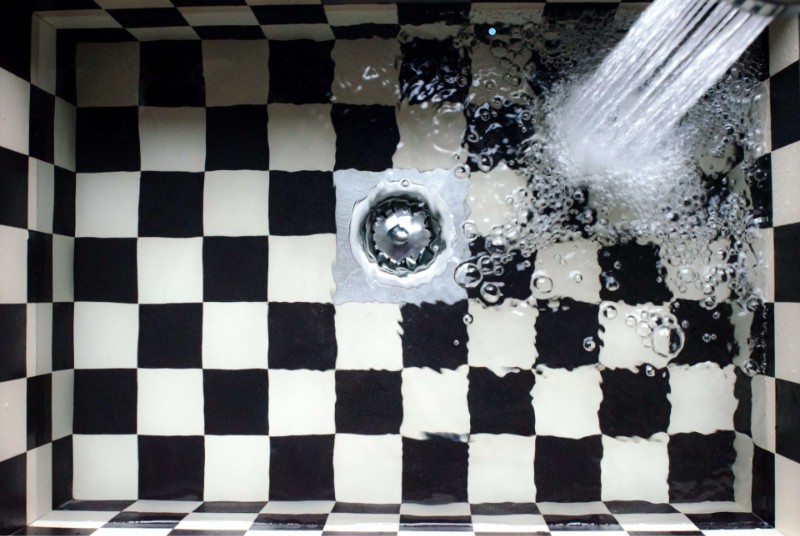
Clearing Stubborn Blockages
Sometimes, stubborn blocked drains require a little extra effort to clear. Here are some DIY mixtures that can help break down grease and soap scum:
- Baking Soda and Vinegar: Create a paste by mixing baking soda with vinegar. Apply the paste to the affected area, let it sit for a while, and then scrub with a brush or sponge. Rinse thoroughly with water.
- Lemon Juice: Lemon juice is known for its acidic properties. Squeeze fresh lemon juice onto the soap scum, or use a mixture of lemon juice and water. Allow it to sit for a few minutes before scrubbing and rinsing.
- Dawn Dish Soap: Dawn dish soap has powerful degreasing properties. Mix a small amount with warm water and apply it to the soap scum. Let it sit for a few minutes, scrub gently, and rinse thoroughly.
It's important to note that results may vary depending on the severity of the blockage and the type of soap scum or grease present. Always test these mixtures in a small, inconspicuous area before applying them to the entire surface.
Chemical drain cleaners can be effective in breaking down tough blockages. Strong formulas can dissolve hair, grease, and soap scum. They can provide quick results and are easily accessible as these drain unblocking cleaners can be available at most stores.
However, you need to be aware that these harsh chemicals may damage pipes or fixtures over time. When using chemical drain cleaners, always follow the instructions provided by the manufacturer and take appropriate safety precautions, such as wearing gloves and ensuring proper ventilation to avoid potential risks to personal health if not used correctly.
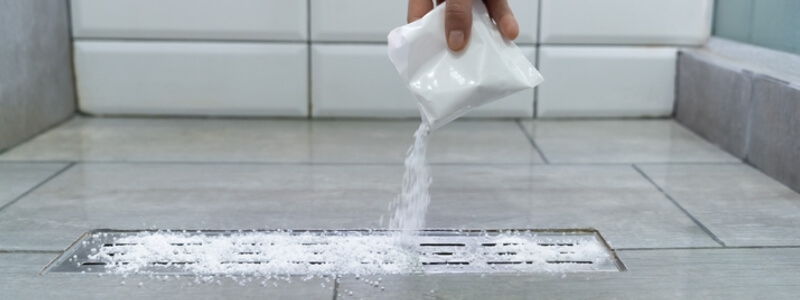
When to seek professional help for persistent blockages:
If you've tried DIY methods and the blockage persists or if you're not comfortable attempting further unclogging techniques, it may be time to seek professional help for your drain unblocking services. A licensed plumber has the expertise and advanced drain unblocking equipment to address more complex or stubborn blockages safely.
Professional plumbers can diagnose the underlying cause of the blockage and provide appropriate solutions to ensure long-term drain health. They can also advise on preventive measures to avoid future blockages.
Remember, safety and proper maintenance are crucial when dealing with persistent blockages. If in doubt or if the blockage seems beyond your expertise, it's best to consult a professional plumber for assistance.
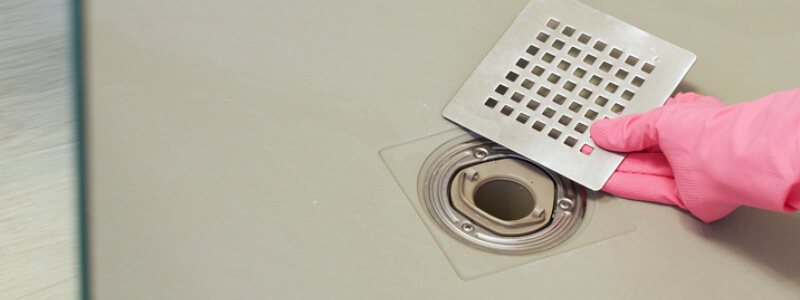
Preventing Future Blockages
To ensure that your shower drain remains clear and clog-free, it's important to implement regular maintenance practices and take preventive measures. Here are some tips to help you prevent future blockages:
Regular maintenance tips to keep your shower drain clear:
- Regularly remove visible hair and debris: After each shower, remove any visible hair or debris from the drain surface using a drain cleaning tool or your fingers (if you're comfortable doing so). This will help prevent them from accumulating and causing blockages.
- Flushing with hot water: Once a week, pour a pot of boiling water down the drain to help dissolve any accumulating soap scum or grease. Hot water can help break down these substances and keep your drain flowing smoothly.
- Monthly vinegar flush: To combat mineral buildup and keep your drain clean, pour one cup of white vinegar down the drain. Let it sit for about 30 minutes, then flush the drain with hot water.
Avoiding common culprits that cause blockages:
- Grease and oils: Avoid pouring greasy substances or oils down the drain, as they can solidify and cause blockages. Instead, dispose of them in a separate container and place them in the trash.
- Hair: Hair is a common cause of shower drain blockages. To minimise hair entering the drain, consider brushing your hair before showering and using a drain cover or hair catcher to trap loose strands.
- Soap residue: Soap scum can accumulate over time and contribute to blockages. Opt for liquid soap instead of bar soap, as it tends to leave less residue. Regularly wipe down the shower surfaces to remove any soap buildup.
Installing drain covers and hair catchers as preventive measures:
Installing drain covers or hair catchers is an effective preventive measure to keep unwanted debris from entering and clogging your shower drain. These devices are typically made of fine mesh or plastic material, allowing water to flow while capturing hair and other particles.
To install a drain cover or hair catcher, simply place it over the drain opening and ensure it fits securely. Regularly clean and remove any collected debris to maintain its effectiveness.
By implementing these regular maintenance tips and preventive measures, you can significantly reduce the chances of future blockages in your shower drain. Remember, prevention is key to maintaining a clear and efficient drainage system.
Conclusion
Maintaining a well-functioning shower drain not only prevents inconveniences but also helps to avoid potential water damage and costly repairs. With proper care, your shower drain will serve you well for years to come.
If the problem is too big for you to tackle, here at Cotswold Drainage, we have a drain cleaning service for your needs. We can help deal with your clogged drain with a professional drainage engineer to make sure your drain blockage is dealt with before further work needs to be done. Please contact us for any questions regarding your pesky shower drains.
Our Top
Articles

